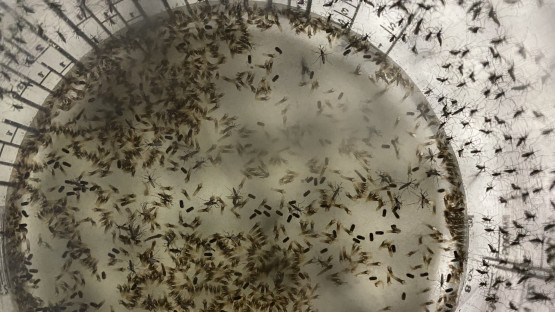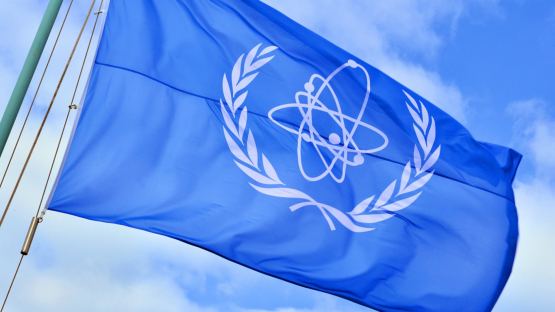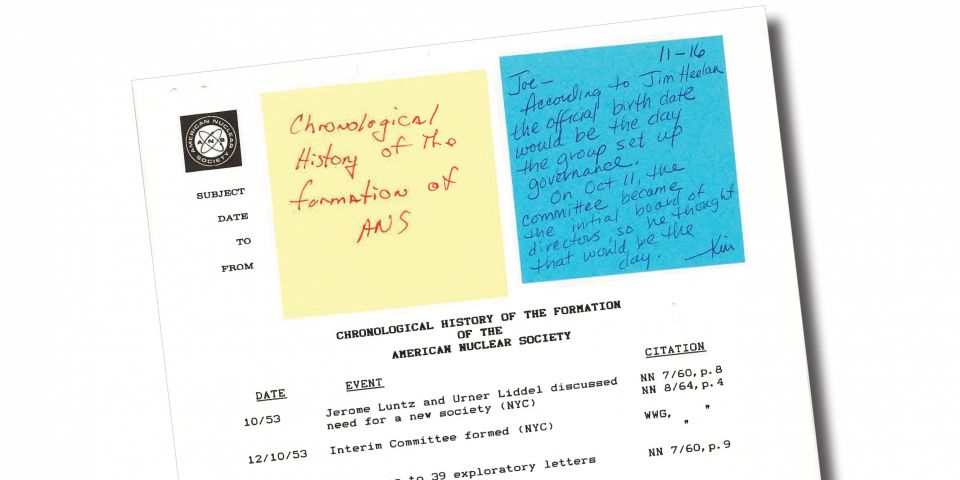Florida mosquitoes targeted by nuclear-derived sterile insect technique

Sterile mosquitoes are being used to reduce the population of insecticide-resistant Aedes aegypti mosquitoes in Fort Myers, Fla., which can spread viruses including dengue, yellow fever, Zika, and chikungunya.
The mosquitoes that pose a threat to public health in the neighborhoods of southwest Florida are “an exotic invasive mosquito,” according to FAQs from the Lee County Mosquito Control District (LCMCD). A pilot project by LCMCD using the nuclear technology–derived sterile insect technique (SIT) to control A. aegypti in cooperation with the International Atomic Energy Agency and the Food and Agriculture Organization is described in a news article published by the IAEA on June 7.

Sterile male A. aegypti mosquitoes inside a bucket and ready for release on Captiva Island. (Photo: LCMCD).
An established technique: The A. aegypti is “an urban mosquito,” according to the LCMCD, “which means it breeds around homes and prefers to feed on humans. They are difficult to control by conventional methods (insecticide application and source reduction) due to their use of containers and daytime biting habits.”
While SIT may be considered an unconventional method of insect control, it is not new. SIT involves rearing male (nonbiting) insects that have been sterilized using radiation—from either gamma rays or X-rays—before they are released in large numbers to mate with female mosquitoes, resulting in fewer offspring.
SIT was first widely used in the 1950s and has successfully eliminated insect pests in treated locations. In fact, according to the LCMCD, SIT’s “first use in the United States occurred on Sanibel Island in 1951 to eliminate the screwworm fly. Recently, sterile screwworm flies were released to successfully control a localized outbreak in the Florida Keys.” Sanibel Island is in Lee County, Fla.
To the mainland: The Fort Myers SIT pilot project is picking up where an earlier pilot project on Captiva Island, which is also in Lee County, left off. That successful project, conducted between 2020 and 2022, saw about 400,000 sterile males released per week. The releases led to a significant reduction of the population in 2020, and complete suppression in 2021 and 2022, according to the IAEA. Neighboring Sanibel Island, which also had a problematic A. aegypti population, served as a control.
The project came to an end in September 2022 when Hurricane Ian temporarily destroyed island infrastructure and a portion of the causeway connecting the two islands to the mainland, making it unreachable by car. The LCMCD decided to shift the program to the mainland and apply lessons learned from Captiva Island.
The first release of sterile insects in Fort Myers took place in February 2024, and the results will be monitored. According to the LCMCD, “released mosquitoes are dusted with fluorescent powder. Traps for adult mosquitoes and for eggs are strategically mapped and placed around the neighborhood. The mosquitoes and eggs collected in the traps are analyzed and recorded which helps us determine our impact on the population of Aedes aegypti.”
IAEA involvement: The SIT pilot project in Fort Myers is funded in part by extrabudgetary funding contributions by the United States to the IAEA’s Peaceful Uses Initiative (PUI). Experience gained in Florida with A. aegypti could help similar efforts in other nations.
Rui Cardoso Pereira, who leads Insect Pest Control at the Joint FAO/IAEA Centre of Nuclear Techniques in Food and Agriculture, said “The extrabudgetary PUI funds contributed by the [United States] have been instrumental for R&D-based improvement of the SIT package for Aedes mosquitoes and its further transfer to pilot projects in our member states.”
According to David Hoel, executive director of the LCMCD, “The unique attributes of this program and technical expertise provided to us by the IAEA is enabling LCMCD to gain a foothold in suppression of this mosquito which is difficult at best to control by conventional mosquito control techniques and shows great promise for future prevention of mosquito-borne disease threat in Lee County, Fla.”







